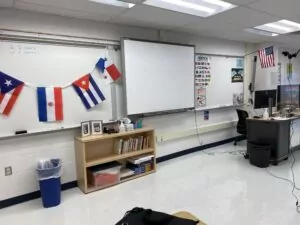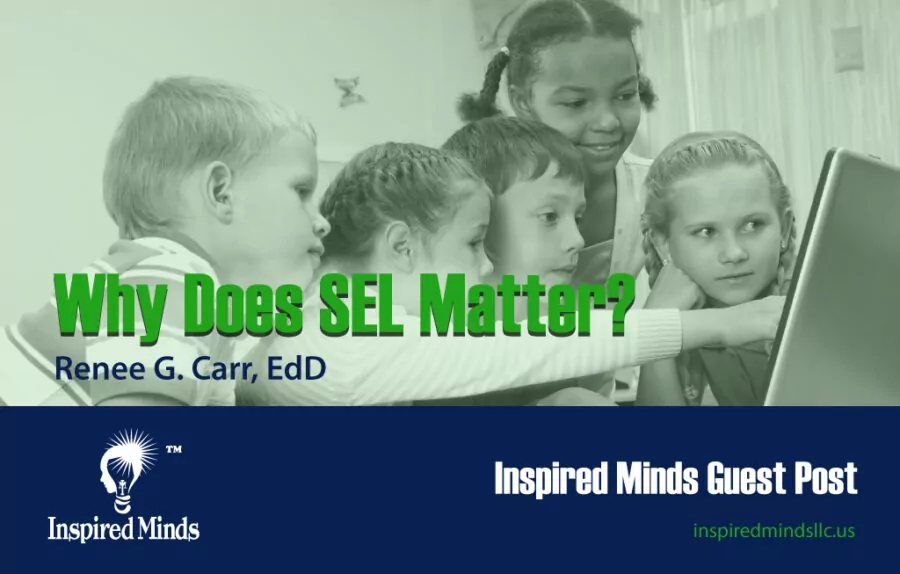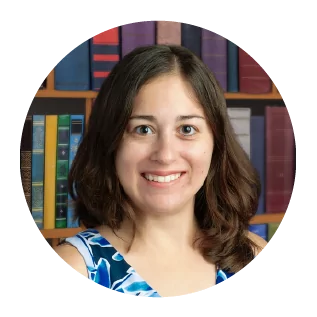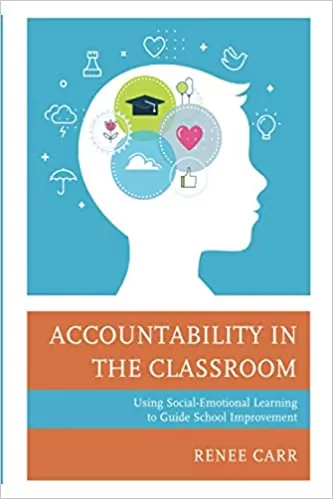By Guest Blogger: Renee G. Carr, EdD
Students need to learn how to have effective and positive relationships, perseverance, and well-being for their own success. Students need motivation, effective decision-making, and self-management to achieve high results. Previously teachers were not expected to cover such non-academic topics, but now it is more important than ever for student success. Once referred to as “non-academic” skills, these social-emotional traits are the skills that allow individual students to achieve high results both in the classroom and in life.
The Collaboration on Academic and Social-Emotional Learning (CASEL)’s SEL competencies include self-awareness, self-management, social awareness, relationship skills, and responsible decision-making. SEL stems from emotional intelligence theory or the understanding of one’s own emotions and others and how to best regulate emotions.
Use of SEL in the Classroom
 For SEL to be effective in the classroom, it is important to set norms at beginning of the year to instill success all year long. This classroom norming can occur through a class contract or agreed-upon class rules at the beginning of the year. In classes, a discussion of ways in which students and the teacher can support each other from the beginning in case these issues come up during the year. Teachers can post an example of rules and ask students to use positive language.
For SEL to be effective in the classroom, it is important to set norms at beginning of the year to instill success all year long. This classroom norming can occur through a class contract or agreed-upon class rules at the beginning of the year. In classes, a discussion of ways in which students and the teacher can support each other from the beginning in case these issues come up during the year. Teachers can post an example of rules and ask students to use positive language.
Another example of effective classroom norming is to ask students to write an essay in English or in target language in advanced classes. Teachers ask students what they want their teachers to know about them, what they want to learn, and their expectations for the course. Educators can have them reread the essays at the end of the year to see if expectations are met.
For a positive environment to fully take hold, the teacher focuses on inclusion to foster relationships amongst peers and between the teacher and students. Group work and partner work foster those relationships in class. If someone does not have a partner, teachers can assign them one or a group, so no one is left out. Sometimes teachers participate in the activity as a student to model behavior and learning.
Review is a powerful tool in any classroom. Review allows students to transfer new knowledge and skills from short-term to long-term memory, and then keep it there. The more valuable or complex the information is, the more effort we need to put in. Giving plenty of time to review helps build student confidence. Review activities include jotting down what vocabulary words they can remember per each category we have studied. Teachers also have students do station reviews where they move around to various stations in groups focusing on topics we have recently studied.
Seek Feedback
At the mid-point of the year, after Winter Break, students can complete a goal-setting worksheet for the new year, and teachers can ask them for some feedback. Below are the sample questions to ask classes. Teachers can incorporate the feedback into their lessons and lesson planning.
- Do you feel that the goals for learning are clearly communicated to you?
- Do you know the purpose of our lessons?
- Are procedures and instruction easily understood?
- Is new instruction connected to prior lessons?
When teachers use the survey data to reach students, it shows that teachers are listening and that they take student voice into account. It is an essential part of effectively engaging with students. Engaging students in the learning process increases their attention and focus, motivates them to practice higher-level critical thinking skills, and promotes meaningful learning experiences. Students need a variety of activities to keep engaged. It helps to change them every 15 minutes to do about five activities per hour and a half class.
Provide multiple explanations in a variety of ways to reach the most students possible. Students enjoy interactive games like charades, Pictionary, card games, Monopoly in the target language, hangman, and bingo in person. In virtual and hybrid settings, they enjoy Quizziz, Quizlet Live, Kahoot, Blooket, Edpuzzle, Pear Deck, Nearpod, and more.
Cultural Context
Cultural Context is a vital component of any classroom. Culture is central to how we think, live, and see the world. Understanding students’ cultural socializations is critical to understanding how identity can contribute to a sense of belonging. A culturally responsive approach is important to bridging the gap. It is beneficial for teachers to understand the perspectives and expectations of their students so that they can tailor their lesson planning and activities in culturally aware ways. Teachers can ask students from various cultural backgrounds for support when explaining new concepts.
Renee G. Carr, EdD has been working in education and related programmatic work since 2007. She is multilingual: she speaks Modern Greek, French, and Spanish. Dr. Carr has worked at a university, a government contractor, non-profits, associations, and two school districts in the Washington, DC area. Dr. Carr’s areas of expertise include social-emotional learning, international exchange, and world languages. She has a background in educational research including qualitative coding, case studies, literature reviews, and project management. She has presented at conferences and shared research findings with peers in her field. She recently wrote a book for the publisher Rowman & Littlefield called Accountability in the Classroom: Using Social-Emotional Learning to Guide School Improvement. The premise of this book came from her dissertation topic, social-emotional learning, and school accountability systems. She added her own experiences as an educator both from the perspectives of World Language education and the COVID-19 crisis. Dr. Carr received her EdD from the George Washington University in 2019 and her MA in Political Science in 2009 from the University of North Carolina, Chapel Hill. She obtained her BA in French and International Studies in 2007 from the University of Washington.




